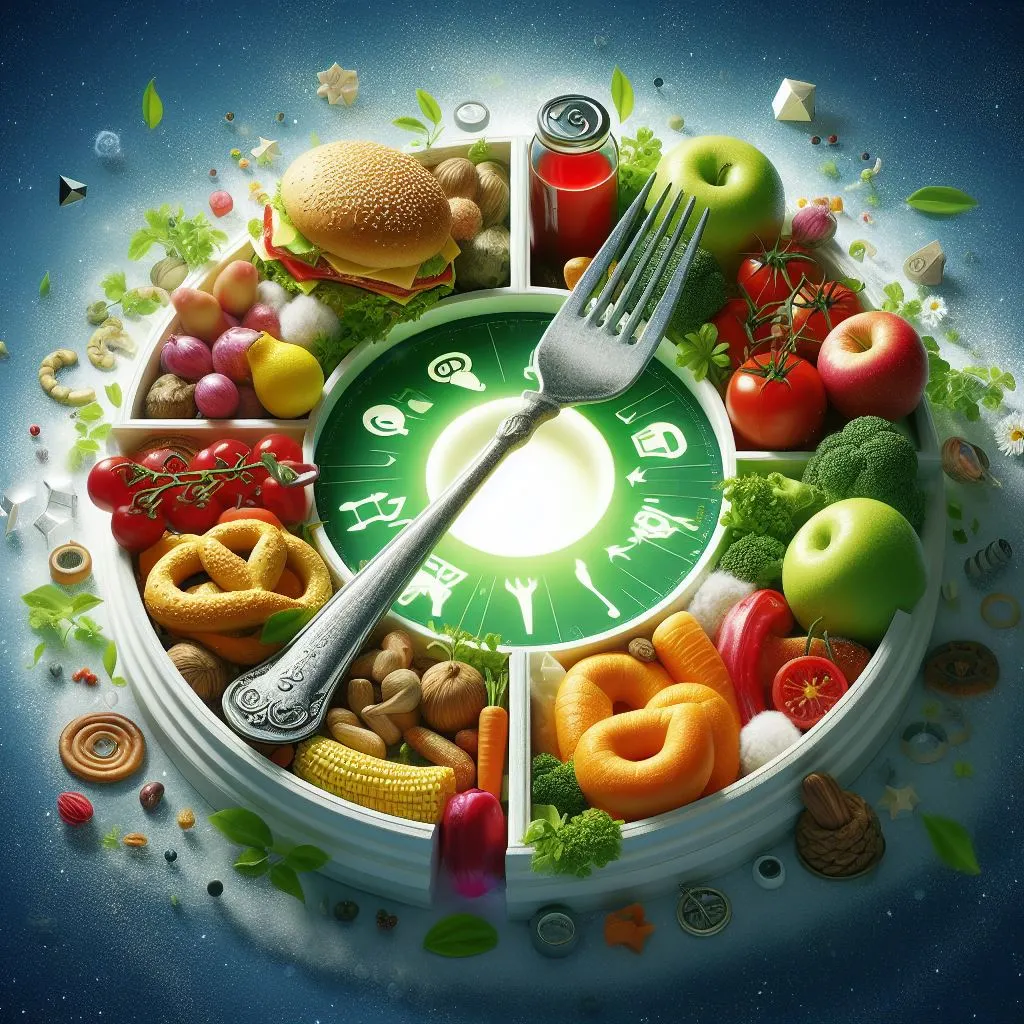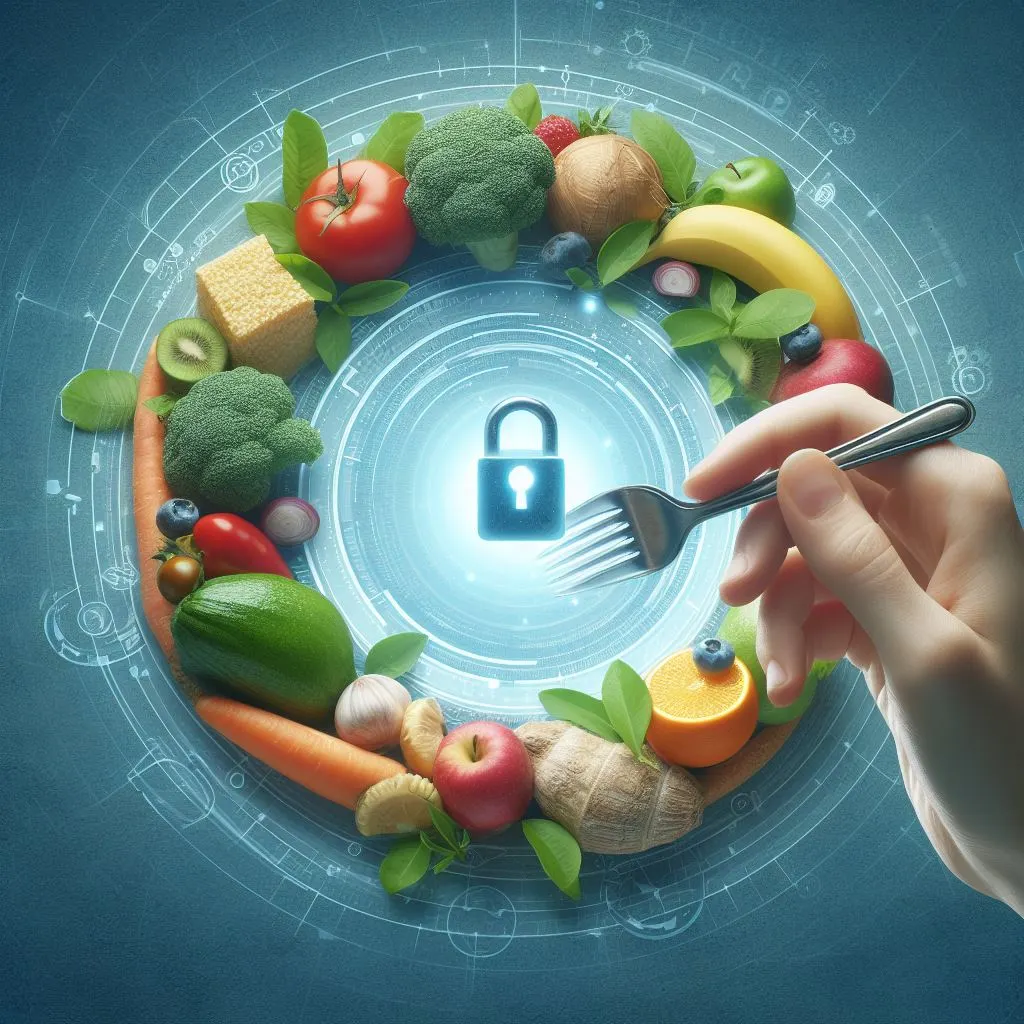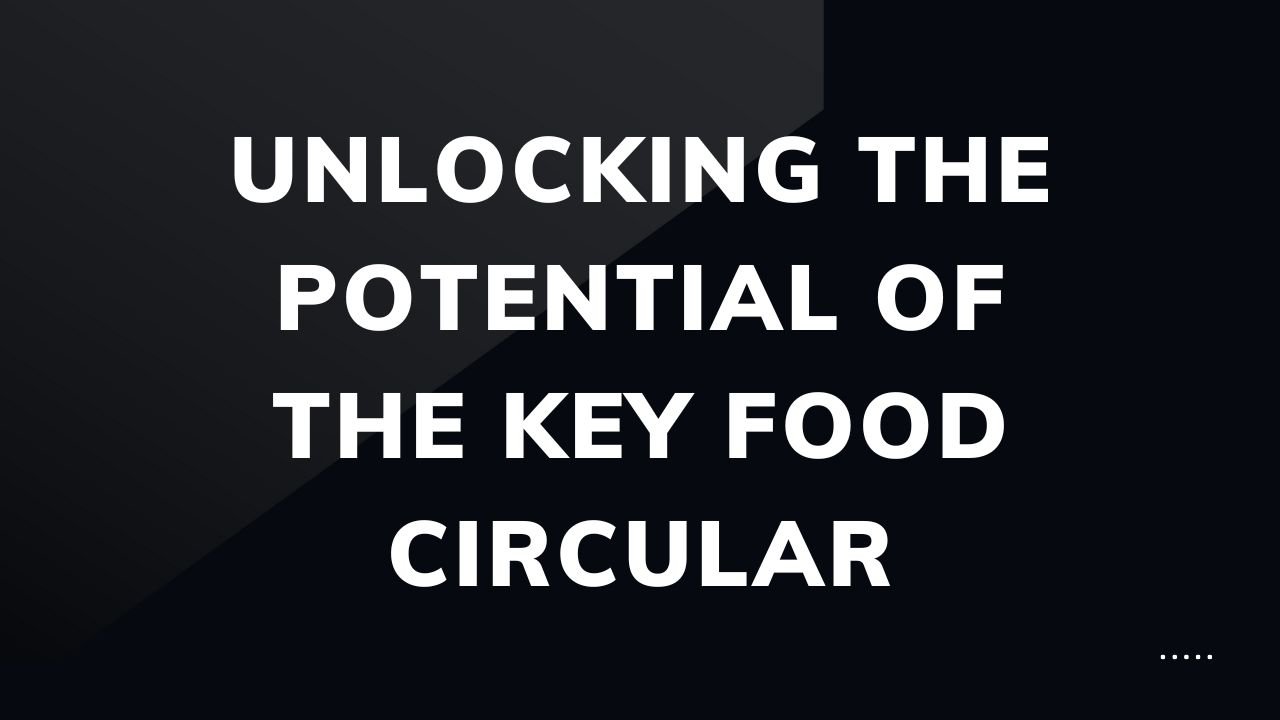Introduction
In an era where sustainability and environmental consciousness are becoming increasingly crucial, the concept of the “Key Food Circular” has emerged as a game-changer in the realm of food systems. This innovative approach aims to transform the linear model of food production, consumption, and waste into a regenerative, circular economy that maximizes resource efficiency and minimizes environmental impact.
The Key Food Circular is a comprehensive framework that encompasses various aspects of the food value chain, from sustainable agriculture and responsible sourcing to efficient distribution, conscious consumption, and effective waste management. By embracing this holistic approach, we can not only address the pressing challenges of food security and environmental degradation but also unlock numerous economic, social, and ecological benefits.

image Source = bing Ai
The Challenges of the Linear Food System
Before delving into the intricacies of the Key Food Circular, it’s essential to understand the limitations and drawbacks of the traditional linear food system. The current model is characterized by a “take-make-waste” approach, where resources are extracted, processed, consumed, and discarded, leading to significant resource depletion and environmental pollution.
- Resource Depletion: The linear system relies heavily on finite natural resources, such as fossil fuels, water, and arable land, putting immense pressure on these vital resources.
- Environmental Degradation: Unsustainable agricultural practices, excessive packaging, and improper waste management contribute to soil degradation, water pollution, and greenhouse gas emissions.
- Food Waste: According to the Food and Agriculture Organization (FAO), approximately one-third of all food produced globally is lost or wasted, representing a colossal squandering of resources and economic value.
These challenges underscore the urgent need for a paradigm shift in our approach to food systems, paving the way for the Key Food Circular.
The Key Food Circular: A Regenerative Approach
The Key Food Circular is a comprehensive framework that reimagines the entire food value chain, emphasizing sustainability, resource efficiency, and regenerative practices. By adopting a circular approach, we can create a resilient and self-sustaining food system that not only meets our current needs but also safeguards the planet’s resources for future generations.
Sustainable Agriculture
The foundation of the Key Food Circular lies in sustainable agricultural practices that prioritize soil health, biodiversity, and responsible resource management. This includes:
- Regenerative Farming: Adopting techniques such as crop rotation, cover cropping, and agroforestry to enhance soil fertility, reduce erosion, and sequester carbon.
- Precision Agriculture: Leveraging technology and data-driven insights to optimize resource utilization, including water, fertilizers, and energy.
- Organic and Biodynamic Farming: Promoting ecological balance and minimizing the use of synthetic inputs, reducing the environmental footprint of food production.
Responsible Sourcing and Distribution
Responsible sourcing and efficient distribution are crucial components of the Key Food Circular. By establishing transparent and ethical supply chains, we can ensure traceability, fair trade practices, and minimize food loss during transportation and storage.

- Local and Regional Sourcing: Supporting local and regional food systems reduces food miles, lowers carbon emissions, and fosters community resilience.
- Cold Chain Optimization: Investing in advanced cold chain technologies and infrastructure to maintain food quality and extend shelf life.
- Digital Supply Chain Management: Leveraging digital tools and data analytics to streamline logistics, reduce waste, and enhance supply chain transparency.
Conscious Consumption and Waste Management
The Key Food Circular also emphasizes the importance of conscious consumption and effective waste management. By promoting mindful food choices and implementing robust waste reduction strategies, we can minimize the environmental impact of our food systems.
- Consumer Education: Empowering consumers with knowledge about sustainable food choices, portion control, and the impact of their dietary habits.
- Food Donation and Redistribution: Establishing partnerships with food banks and charitable organizations to redirect edible surplus food to those in need.
- Composting and Anaerobic Digestion: Diverting organic waste from landfills and utilizing composting and anaerobic digestion processes to create valuable soil amendments and renewable energy.
Resource Recovery and Recycling
The Key Food Circular embraces the principles of resource recovery and recycling, ensuring that valuable materials are diverted from waste streams and reintroduced into the production cycle.
- Nutrient Recovery: Extracting nutrients from organic waste streams, such as food processing residues and manure, to create nutrient-rich fertilizers.
- Packaging Recycling: Promoting the use of recyclable and biodegradable packaging materials, and implementing effective recycling systems.
- Water Reuse and Recycling: Implementing water conservation measures and exploring opportunities for water reuse and recycling in agricultural and industrial processes.
The Benefits of the Key Food Circular
By embracing the Key Food Circular, we can unlock a multitude of benefits that transcend the boundaries of environmental sustainability and extend into the realms of economic prosperity, social equity, and human well-being.
- Environmental Sustainability: Reduced greenhouse gas emissions, conserved natural resources, and minimized waste and pollution.
- Economic Opportunities: Job creation in sustainable agriculture, renewable energy, and waste management sectors, as well as cost savings through resource efficiency.
- Food Security: Increased resilience and self-sufficiency in food production, ensuring a stable supply of nutritious food for communities.
- Social Equity: Promoting fair trade practices, supporting local economies, and ensuring access to healthy and affordable food for all.
- Human Health: Reduced exposure to harmful chemicals and pollutants, improved food quality, and enhanced public health outcomes.
Stakeholder Collaboration and Policy Support
Transitioning to the Key Food Circular requires concerted efforts from various stakeholders, including policymakers, businesses, researchers, and consumers. By fostering collaboration and implementing supportive policies, we can accelerate the adoption of circular practices in the food sector.
Stakeholder Engagement
- Policymakers: Developing and implementing regulatory frameworks that incentivize sustainable practices, such as carbon pricing, eco-labeling, and green public procurement.
- Businesses: Investing in research and development, adopting circular business models, and collaborating with suppliers and consumers to drive innovation and sustainable practices.
- Researchers and Innovators: Conducting cutting-edge research, developing new technologies, and providing scientific insights to support the transition to a circular food system.
- Consumers: Embracing sustainable food choices, reducing food waste, and actively participating in composting and recycling programs.
Policy Support
- Incentives and Subsidies: Providing financial incentives and subsidies for sustainable agriculture, renewable energy projects, and waste management infrastructure.
- Research and Development Funding: Allocating resources for research and development in areas such as regenerative farming, precision agriculture, and resource recovery technologies.
- Education and Awareness Campaigns: Implementing public education and awareness campaigns to promote sustainable food practices and conscious consumption.
- Regulatory Frameworks: Establishing clear and enforceable regulations regarding food waste, packaging, and resource management to drive industry accountability and compliance.

Case Studies and Success Stories
The transition towards the Key Food Circular is already underway, with various regions, cities, and organizations leading the way in implementing circular practices and demonstrating the feasibility and benefits of this approach.
| Region/Organization | Initiative | Highlights |
|---|---|---|
| Amsterdam, Netherlands | Circular Innovation Program | – Aims to become a circular city by 2050<br>- Supports circular innovation in food, construction, and textiles<br>- Focuses on resource recovery, urban farming, and waste reduction |
| Ellen MacArthur Foundation | Food Initiative | – Promotes circular economy principles in the food sector<br>- Provides research, case studies, and tools for businesses<br>- Collaborates with companies, cities, and governments |
| San Francisco, USA | Mandatory Composting and Recycling | – Implements mandatory composting and recycling for all residents and businesses<br>- Diverts over 80% of waste from landfills<br>- Generates nutrient-rich compost for local farms and gardens |
These examples demonstrate the feasibility and positive impact of adopting circular practices in the food sector, serving as inspiration and guidance for others to follow suit.
Conclusion
The Key Food Circular represents a transformative paradigm shift in our approach to food systems, one that prioritizes sustainability, resource efficiency, and regenerative practices. By embracing this holistic framework, we can create a resilient and self-sustaining food system that not only addresses the pressing challenges of food security and environmental degradation but also unlocks numerous economic, social, and ecological benefits.
The transition towards the Key Food Circular requires collaborative efforts from various stakeholders, including policymakers, businesses, researchers, and consumers.
FAQs
Does the Key Food Circular apply to all Key Food stores?
ans. While most Key Food stores offer similar promotions, some deals might vary by location. It’s always best to check the circular for your specific store to be sure about the available deals.
How can I access the Key Food Circular?
ans.
There are a few ways to access the Key Food Circular:
- Check the website of your local Key Food store. Many Key Food stores have their own website where they post their weekly circular. You can find your local store’s website by searching online.
- Sign up for the Key Food mailing list. This way, you’ll receive an email notification whenever the new circular is available.
- Follow Key Food on social media. Key Food stores often announce the new circular on their social media pages.
What is the Key Food Circular?
ans. The Key Food Circular is a weekly advertisement that features deals and promotions on groceries and other products at Key Food supermarkets.pen_spark
